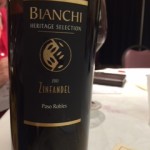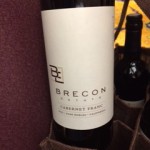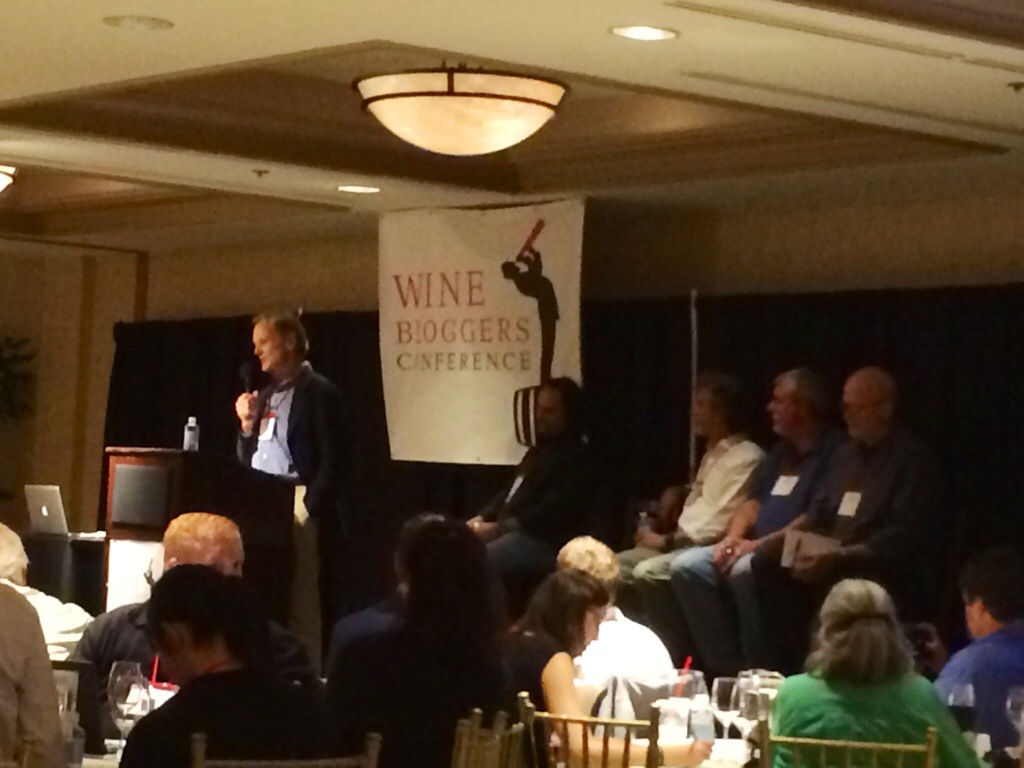Live blogging the whites and rosés yesterday was so overwhelming that I almost didn’t attend the reds session this afternoon, but then I talked myself into it. I joined a little late because I spent so long talking WordPress in the lobby with the charming Allison from Please the Palate that I ran my laptop battery nearly dry and had to run up to my room for the power cord I had left there. She liveblogged the reds too, so if we tasted the same thing, you can compare us. If we diverge greatly, trust her notes, not mine. 🙂
The Wines
Casey Flat Ranch 2011 Red Blend: (52% Cab, 24% Syrah, 6% Merlot, 1% Viognier) Oak and green pepper on the nose, mashed blackberries, and cedar. Kind of a pruney palate, with lots of pine and forest floor, pretty grippy tannins and a lasting menthol/chestnut flavor on the finish.
Gypsy Canyon 2012 The Collector’s Pinot Noir: BIG pomegranate, spicebox, mushroom, and thyme on the nose. Deep cherry juice on the palate with . Smooth mouthfeel, elegant tannins, with some coffee and blueberry on the finish. $110
Bianchi Heritage Selection Paso Robles 2011 Zinfandel: Pretty classic black pepper and blackberry jam with a nice lifted aspect on the top. Tastes like a good bbq ribs wine: sweet notes without cloying jamminess, but a nice bitey char at the end that I think would balance well with any grilled red meat. Yummy!
If you choose to engage in liveblogging, you might be writing your notes with the winemaker looking over your shoulder at your tasting notes. No pressure! :O
Trione Alexander Valley 2009 Red Wine Blend: Wow, menthol much? Mint/tobacco/green pepper overload. Really green on the nose but super-purple in the glass. I was expecting it to be spare on the tongue but it explodes with juice and goes out like an angry, eucalyptus-laden lamb. $45
Taken Napa Valley 2011 Red Wine: two millennial sons of famous Napa winemakers make this; sophisticated nose of pretty oak, currant, and pepper. Grippy tannins and nce fruit. Nothing wrong with this wine, but it didn’t blow my socks off. $30
Bandit NV Cabernet Sauvignon: You’ve seen this wine in the bright purple Tetrapack “bottle.” Great for camping or floating the river. Unremarkable cabernet with sweet oak, blackberry, and pine needles. Very soft tannins and a pretty vegetal finish, but good with burgers over a campfire I bet. Following the fancy Napa cab blend didn’t do it any favors. 🙂
Labyrinth Presqu’ile “Clone 667” 2012 Pinot Noir: Musky sweet/sour burgundy style nose, pretty violets, spice, and subtle herbs. I really enjoy smelling this wine. Smooth and delicious on the tongue, with elegant satiny texture. Extremely well-made. $50
Brecon Estate 2013 Paso Robles Cabernet Franc: Really pretty, floral and fruity nose. The oak lifts the floral spicy smells and complements without competing. Someone said caramel, I guess I can see that. Bright and sassy palate, with not-quite-ripe blackberries and a little tarragon on the finish.
Consilience 2011 Santa Barbara County Syrah: Great floral/fruit nose with brisk black pepper. Jammy and grippy on the palate but not overwhelmingly so. Violets? Lavendar? something flowery on the end there. $20
Whew! Let’s not do that again for a while, ok?







